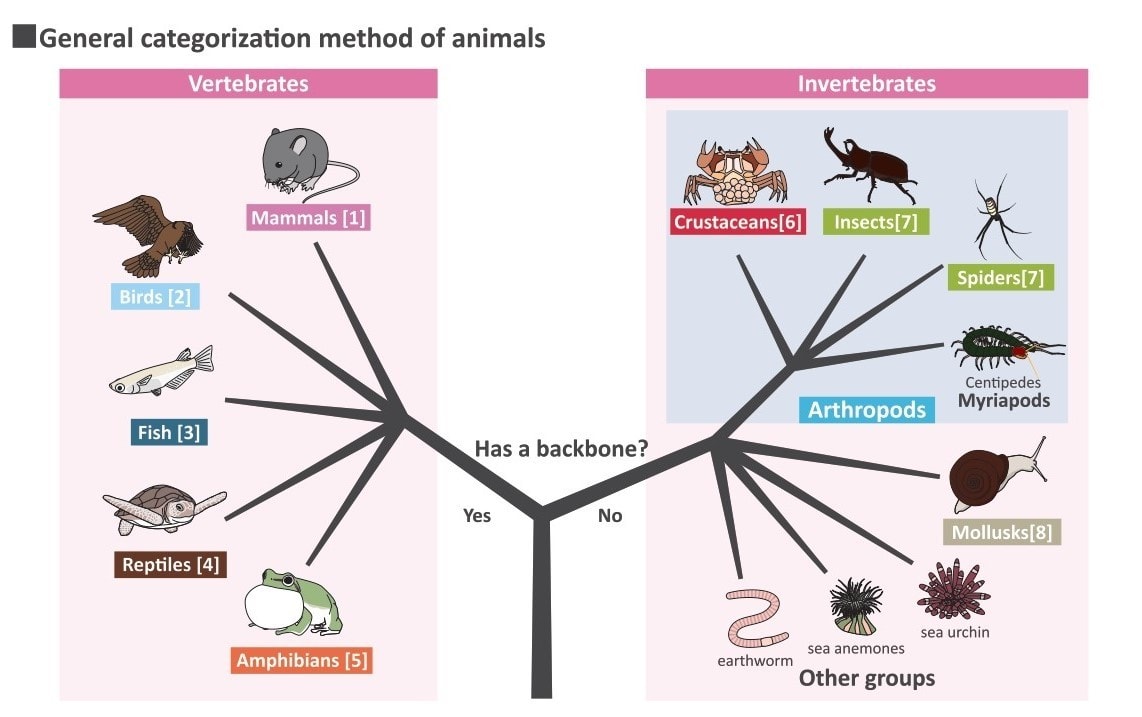
Animal classes
Animals can be largely classified into different groups based on whether or not they have backbones.
Animals with backbones are called “vertebrates”, and animals without backbone are called “invertebrates”.
Based on the general, scientific classification method like this, this game categorizes animals into the following classes from
to
.
In addition to this, we also have “
◎Sea animals” and “
●Flying animals” as additional animal classes.This categorization method gets the game much more exciting when you choose to play under “Three-of-a-Kind” rule.
When playing “Three-of-a-Kind”, you will be collecting 3 cards of animals that belong to one of the classes from
to
.
“Three-of-a-Kind” game rule is designed so that players can naturally learn and remember these different classes while playing the games.
Vertebrates
mammals
Mammals are the animals that grow up from babies into adults by feeding on milk from their mothers.
Whether it’s active on lands or in seawater or in the air, any babies that grow up by their mothers’ milk will be classified as mammals.
Except for a few very rare cases, mammals develop to a certain point inside mothers’ wombs before getting born into this world as young babies.
Except for a few very rare cases, mammals develop to a certain point inside mothers’ wombs before getting born into this world as young babies.
They use lungs to breathe.
The numbers of babies born are small in general, thus parents take a great care of their children while they grow up into adults.
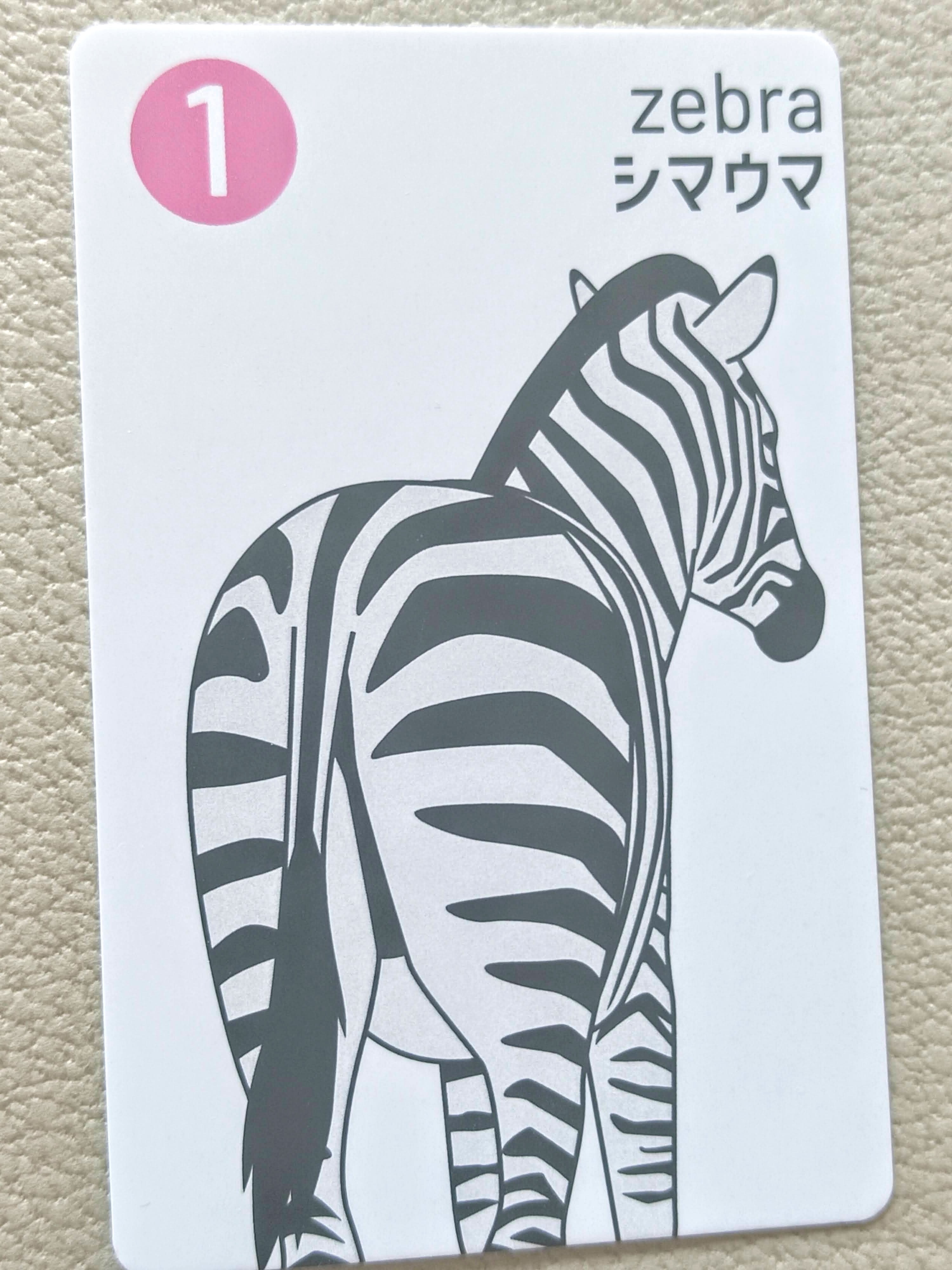
birds
Birds are the animals that have front legs that become wings, and use hind legs to walk.
Most birds use wings to fly, except for some birds such as ostrich and penguin that cannot fly. Birds lay eggs, and breathe with lungs.

fish
It is difficult to define fish class, but in general, out of all animals that are active in water, the ones that do not belong to other classes such as mammals, amphibians and mollusks are classified as fish.
Most fish breathe through their gills, but there are fish that breathe with lungs.
Also, most fish lay eggs. There are some fish that produce eggs that are hatched inside parents’ wombs before giving birth to young fish (ovoviviparous animals).
Fish that produce large number of eggs, from a few hundreds to tens of thousands, usually lay eggs and let them go off on their own.
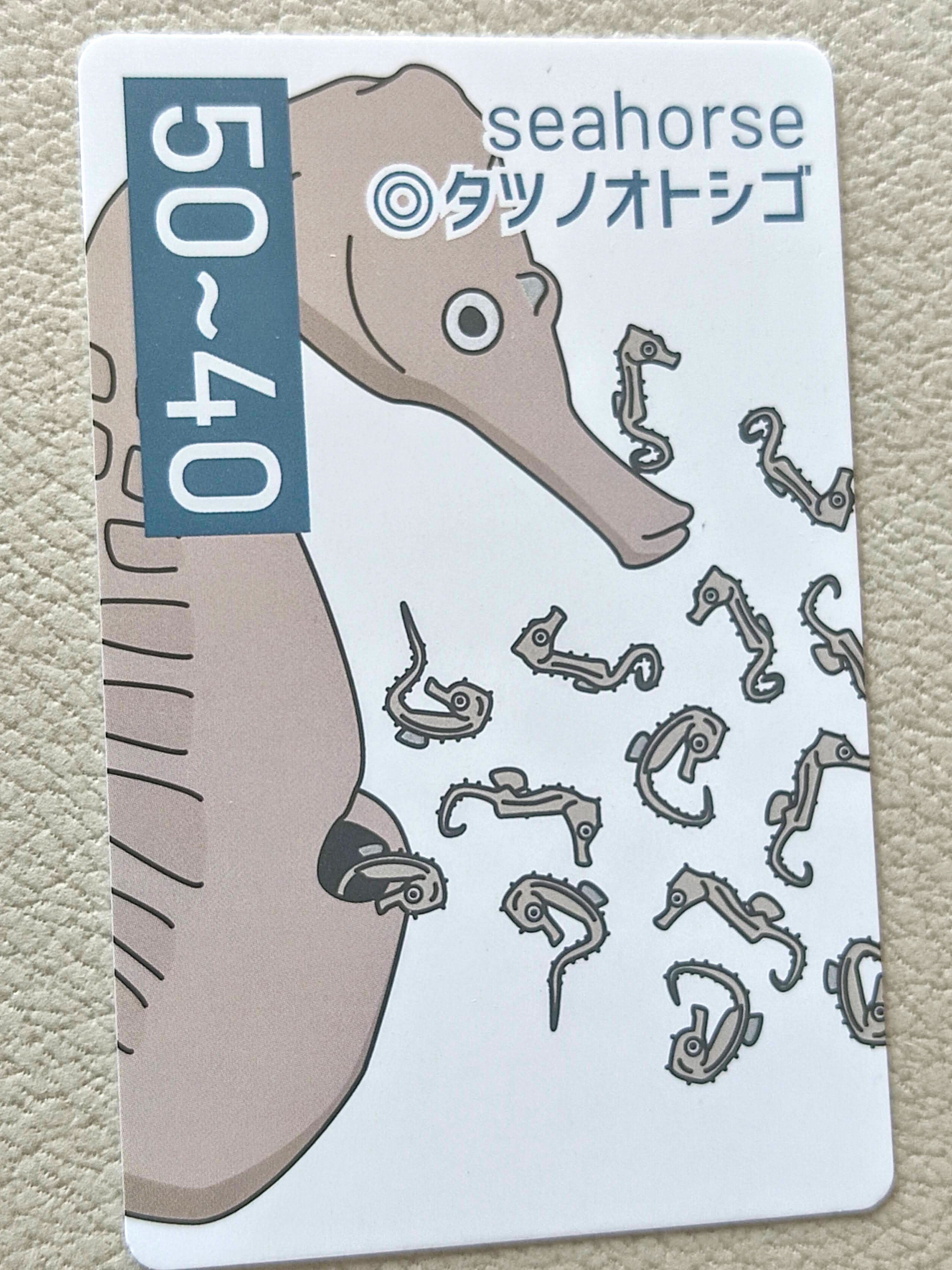
reptiles
Out of all animals that breathe through lungs, reptiles are the poikilothermic animals that have their body surface covered with scales.
There are reptiles that do not have legs, like snakes.
Most of them are oviparous animals that lay eggs, but there are some reptiles that are ovoviviparous.

amphibians
Amphibians are positioned in between Fish class and Insect class.
When young, they breathe with gills in water like fish, and when they grow up they breathe with lungs like reptiles do.
Most of them are oviparous animals that lay eggs, but there are some amphibians that are ovoviviparous.
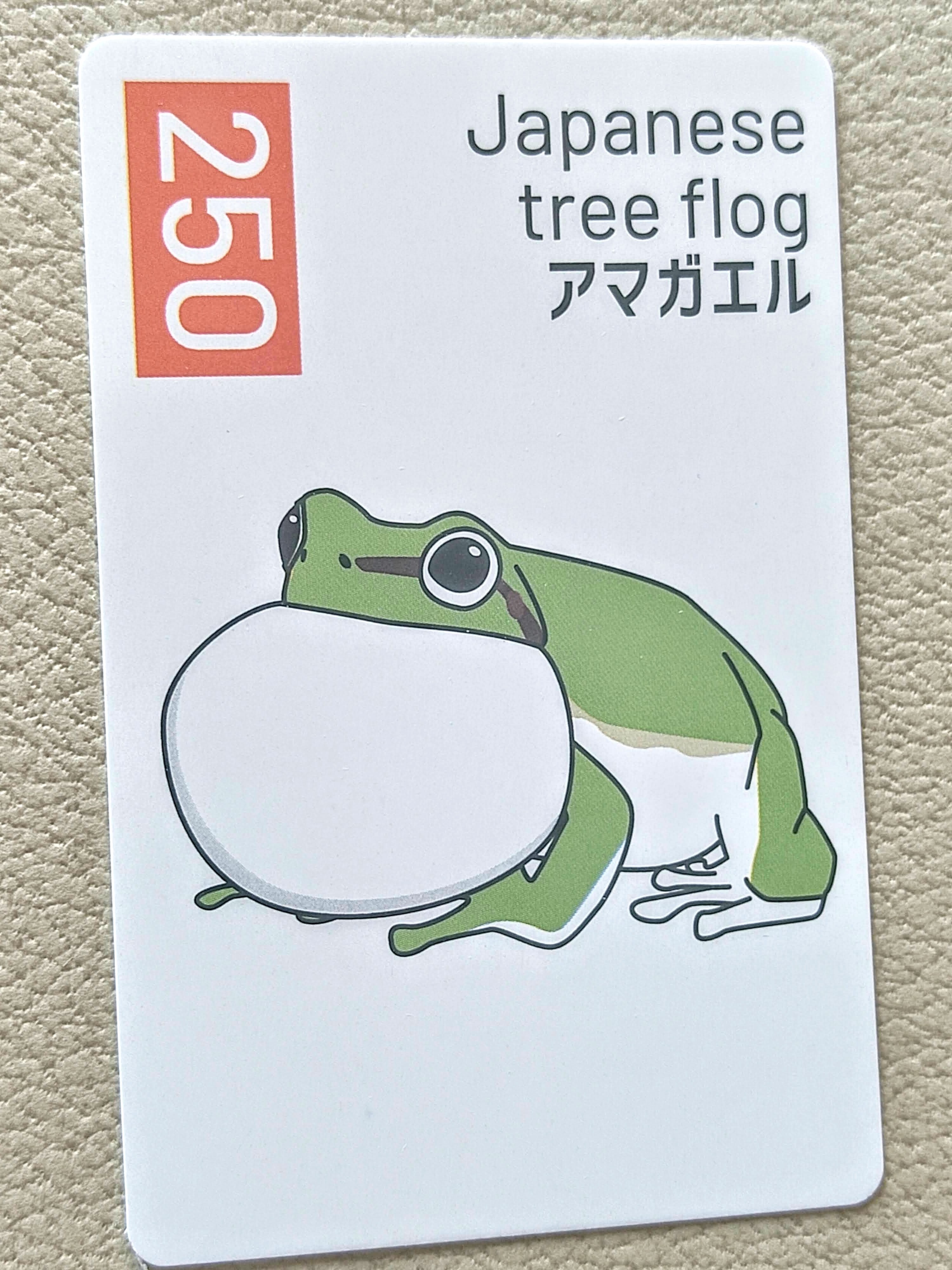
Invertebrates
Invertebrates are different from all the animals that were explained so far – they are the animals that do not have backbones.
Invertebrates can be largely categorized into arthropods, mollusks, and others.
Arthropods can further be categorized into
Crustaceans,
Insects, Spiders, and Myriapods.
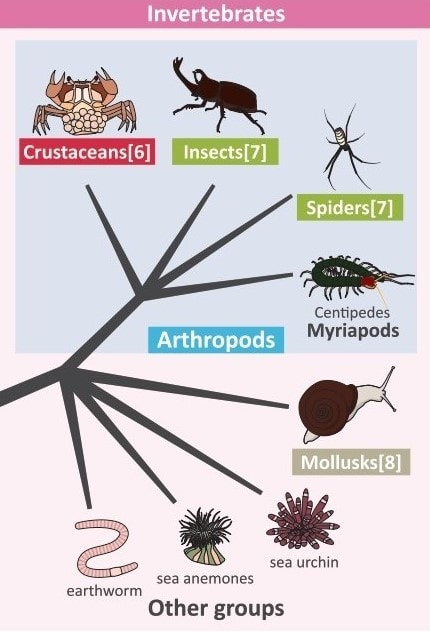
crustaceans
Animals that have segmented bodies/legs are called arthropods.
They do not have backbone, but have skeletal structures.
One of these arthropods is called crustacean, which has rigid shell over its body surface.
(Examples)
Shrimp, crab, crayfish, water flea, pill bug, etc.
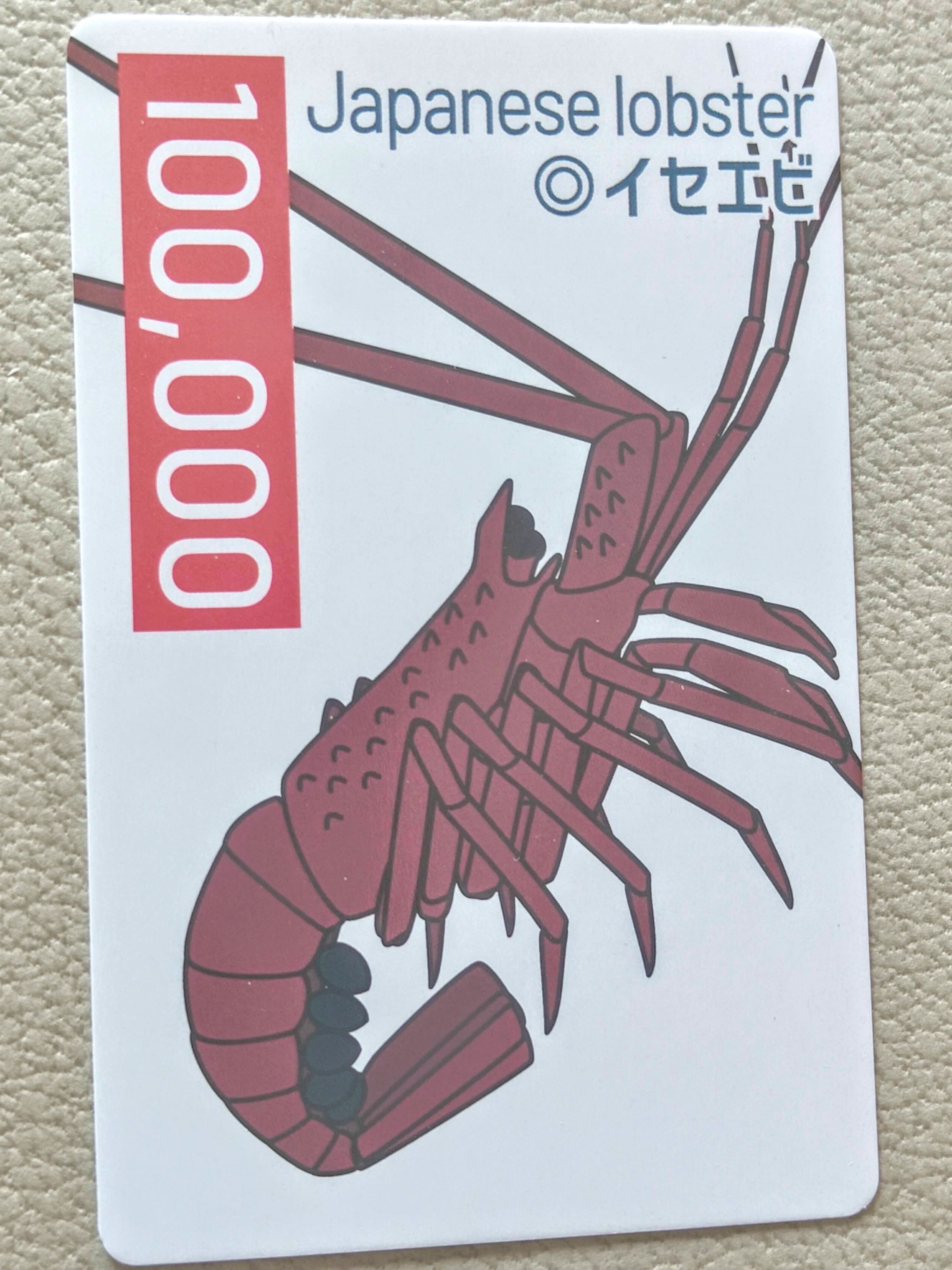
insects (+spiders)
Insects are the ones that we see quite often around us, but they are very difficult to scientifically categorize.
It can get you confused if you try to learn its categorization through school textbooks.
To scientifically define “insects”, they are the arthropod animals that have their body part divided into head, thorax and abdomen.
*
Crustaceans only have their body part divided into 2 parts: cephalothorax and abdomen.
What is interesting is that they have a pair of 3 legs (i.e. 3 legs on both sides totaling 6 legs).
Plus, their legs only come out of their chest area!
Isn’t it strange to have legs coming out of chest, when you compare them with us humans and other animals!?
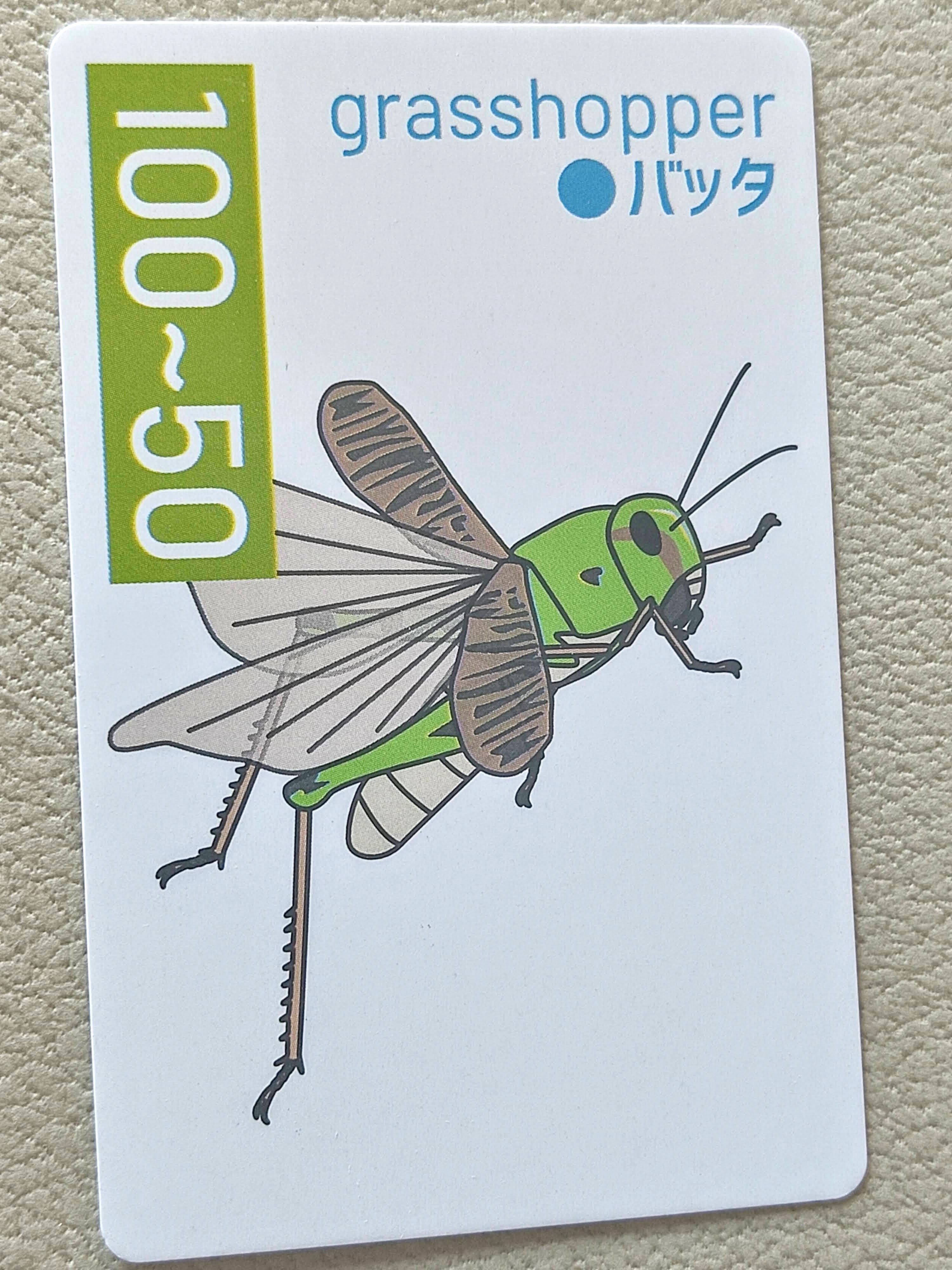
Beware, that scientifically speaking, spiders are not included in insects, but rather they are categorized in the class “Spiders”.
Just like crustaceans, spiders also have their bodies divided into 2 parts: cephalothorax and abdomen.
They have a pair of 4 legs on sides (total 8 legs).
Their legs come out from cephalothorax.
(Examples)
Spider, mite, scorpion, etc.
mollusks
Out of invertebrates, the ones that have segmented bodies/legs are called arthropod animals.
On the other hand, the animals that do not have any segmented body parts, i.e. the ones without skeletal structure, are called mollusks.
They are the animals that are soft, limp, and flexible.
* Squid, one of the most famous mollusks, has white, semi-rigid structure inside its body, but it is said to be a cartilage.

|Myriapods
Out of arthropods, the animals that have many legs are called myriapods.
They do not appear in this game “Babies?”.
(Examples)
Centipede, millipede, etc.
Card Game ”BABIES?”
~How many BABIES?~
- Series 3 -
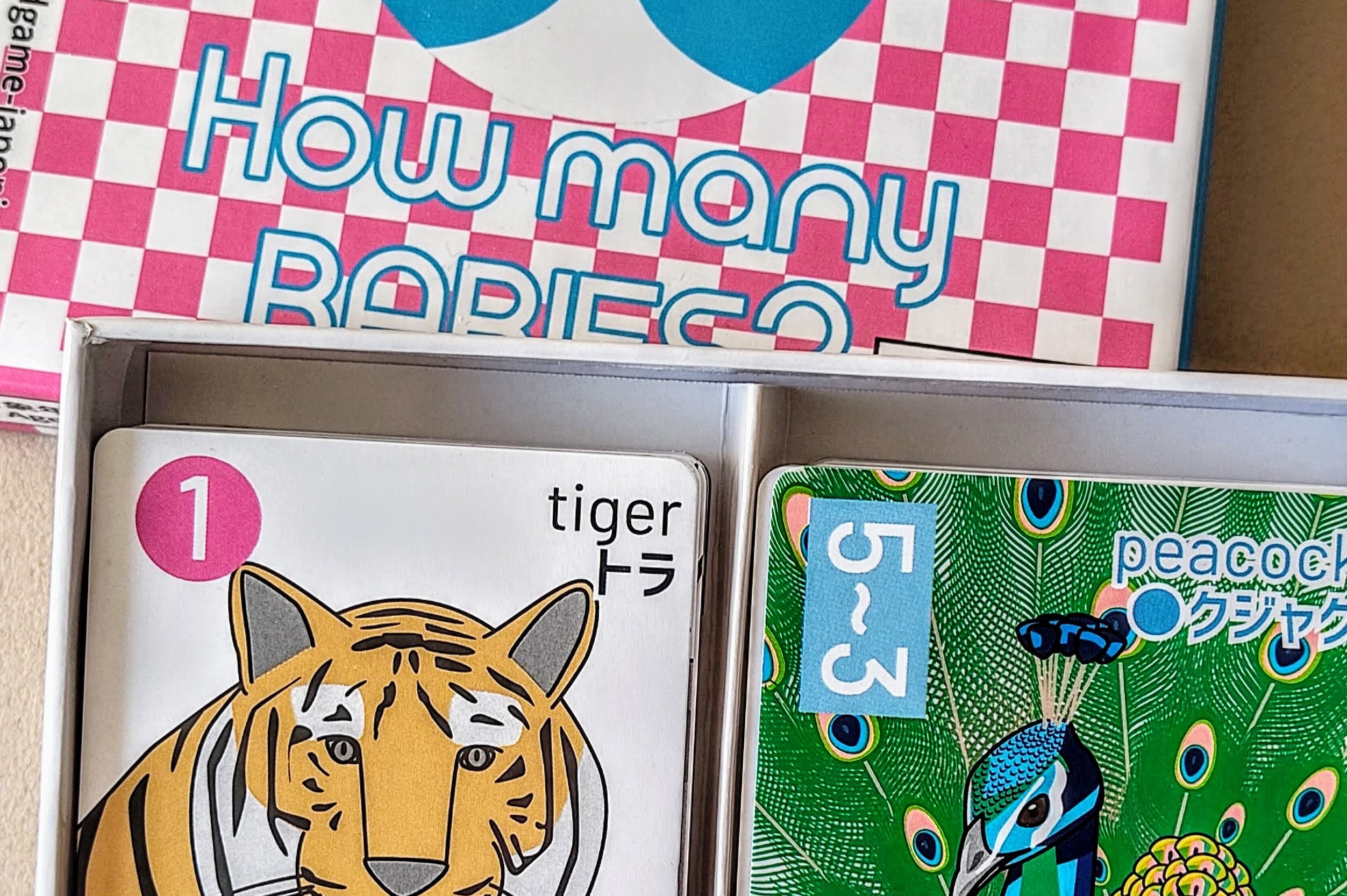
Japan first card game that’s based on the number of babies & eggs of animals that are born into this world!
The 47 Japanese prefectures version
- Series 1 -
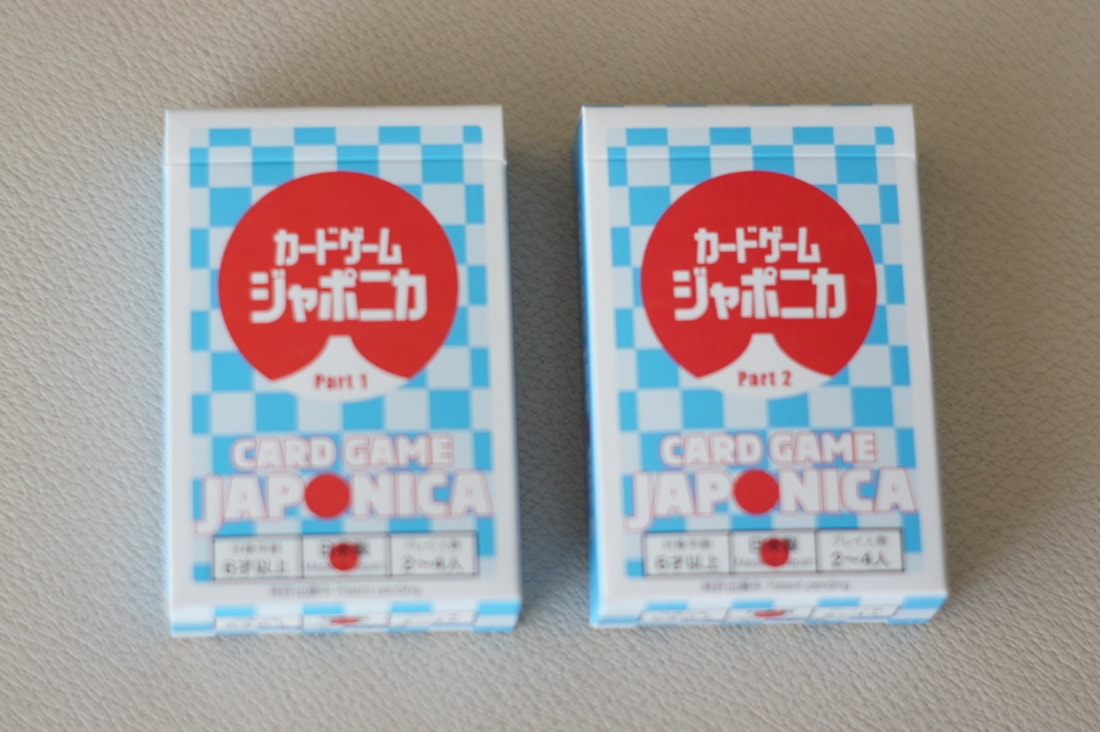
Combine Kanji cards and Kanji radical cards & complete the names of Japanese Prefectures! Japan first card game!
"Sengoku-busho" version
- Series 2 -
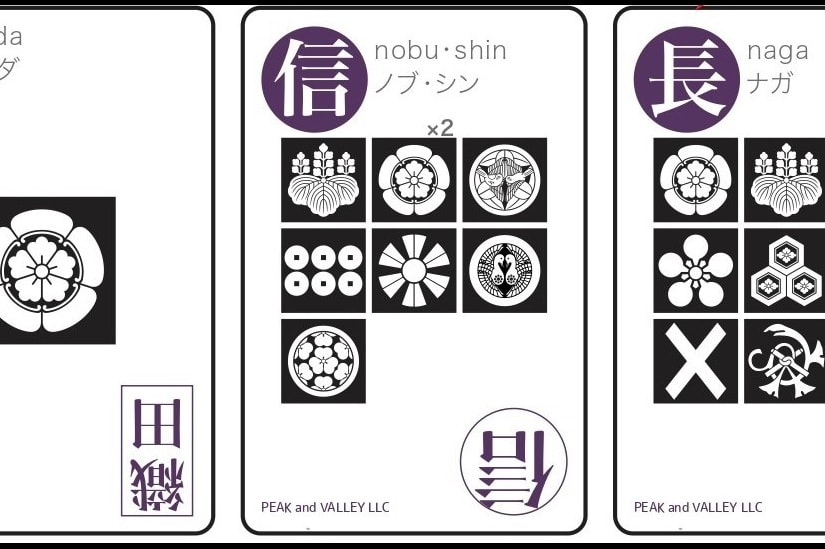
Japan first card game to combine Kanji (+ family crest) cards and complete the names of Japanese Generals from the Age of Warring State!
amazon.com(USA)

